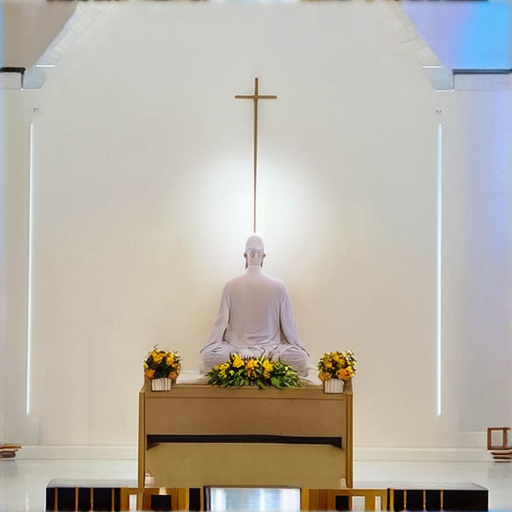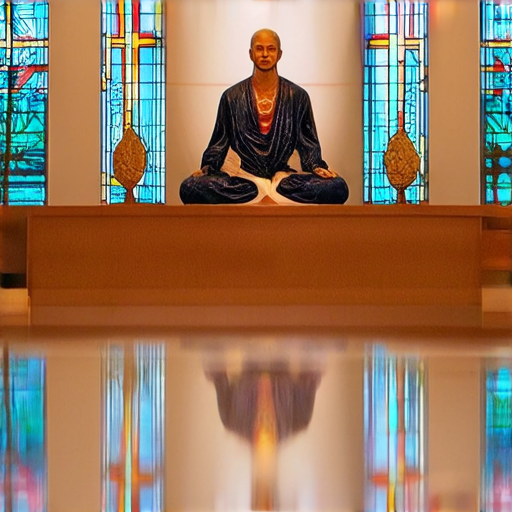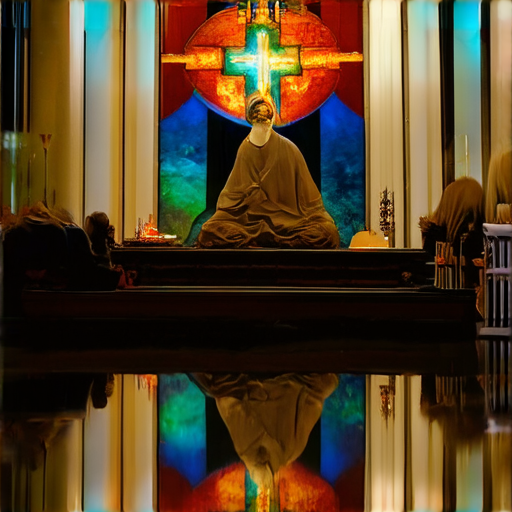The Adoration Chapel holds a profound significance in religious practice, serving as a sacred space dedicated to the Eucharistic presence. For those unfamiliar, an Adoration Chapel is a place where the Blessed Sacrament is exposed for public veneration, often in a permanent setup known as perpetual Eucharistic Adoration. This practice, deeply rooted in Catholic tradition, offers a unique opportunity for individuals to reflect, pray, and draw closer to the divine. Whether you’re exploring the concept for the first time or seeking deeper insights, understanding the Adoration Chapel involves grasping its spiritual, communal, and practical dimensions. From etiquette guidelines to design considerations, this article delves into the essential aspects of Adoration Chapels, providing a comprehensive overview to help both newcomers and regular attendees navigate this sacred experience with reverence and understanding.

What is an Adoration Chapel?
An Adoration Chapel is a sacred space dedicated to the worship and adoration of the Holy Eucharist, where individuals can come before the Real Presence of Jesus Christ to pray, reflect, and deepen their faith. At The Sacred Heart Church, our Adoration Chapel is a place of profound spiritual connection, open daily for anyone who seeks to encounter Christ in the Most Blessed Sacrament.
Purpose of the Adoration Chapel
The primary purpose of the Adoration Chapel is to provide a quiet and reverent environment for believers to engage in Eucharistic adoration. This practice, rooted in Catholic tradition, allows individuals to enter into a deeper relationship with Christ through prayer, meditation, and worship.
How It Operates
Our Adoration Chapel is open 7 days a week, 24 hours a day, offering continuous opportunities for prayer. The Eucharist, reserved in a monstrance, is available for public adoration. Visitors are welcome to come at any time, finding peace and renewal in the presence of Christ.
Significance of Adoration
Eucharistic adoration is a powerful form of devotion that fosters intimacy with God. It reminds us of Christ’s constant and abiding presence among us, even under the appearances of bread. In the Adoration Chapel, we encounter the love and mercy of Christ in a unique and profound way.
Practical Advice for Visitors
- Dress modestly and with respect for the sacred space.
- Approach with reverence and silence, allowing yourself to be present in the moment.
- Engage in prayer, meditation, or reflection, letting the presence of Christ transform your heart.
- Consider spending time in adoration before or after Mass, as it deepens your appreciation for the sacrament.
Join Us in Adoration
We invite you to visit our Adoration Chapel and experience the transformative power of Eucharistic adoration. Your presence is a gift to Christ, as you spend time in His company. May your visit bring you closer to Him and draw you deeper into His divine love.
For more information about our services or to learn more about the Adoration Chapel, please visit our services page or check our Mass schedule at Mass Times .
Etiquette for the Adoration Chapel
The Adoration Chapel is a sacred space dedicated to deepening our connection with God through prayer, reflection, and worship. To ensure everyone’s experience is meaningful and respectful, we ask that all visitors adhere to the following guidelines:
1. Prepare Mindfully
Before entering the chapel, take a moment to prepare your heart and mind. Dress modestly, remove distractions, and arrive early to find a quiet spot.
2. Maintain Respectful Attitude
Approach the chapel with reverence and respect. Remember that this is a place of worship, and your behavior should reflect the peace and tranquility you seek.
3. Observe Silence
silence is essential in the chapel. Please turn off your cell phone or set it to vibrate. No talking, whispering, or disturbances of any kind are permitted during adoration.
4. Do Not Approach the Monstrance
The monstrance is a sacred vessel containing the Eucharist. Please do not touch it or move closer than the designated distance to allow others to adore freely.
5. No Food or Beverages
For the safety and respect of others, please do not bring food or drink into the chapel. Water bottles are allowed, but keep them sealed and out of sight.
6. Keep Children Occupied
If you bring children, ensure they are engaged with age-appropriate activities. Quiet toys or coloring books are acceptable, but noise-making items should be avoided.
7. Leave Quickly When Done
After spending time in prayer, exit quietly to allow others to enjoy the space uninterrupted. Do not linger or chat outside the chapel.
Additional Tips
– Arrive early to find a comfortable spot and allow yourself time to settle in before beginning your prayer.
– Consider bringing a journal or Bible to jot down reflections or thoughts during your time in the chapel.
– Take advantage of the chapel’s ambiance to foster a deeper connection with God through music, meditation, or silent prayer.
By following these guidelines, we can create a serene and focused environment conducive to spiritual growth and connection with the Lord. We welcome you to visit often and experience the transformative power of adoration.

What Not to Do During Eucharistic Adoration
We invite you to approach the time of Eucharistic Adoration with reverence and mindfulness. Here are some guidelines to ensure your presence is respectful and conducive to the sacred moment:
- Silence all electronic devices before entering the chapel or adoration space.
- Dress modestly and appropriately, reflecting the solemnity of the occasion.
- Refrain from placing any objects, flowers, or offerings on the altar or near the monstrance, as this is reserved for the sacred celebration.
- Avoid touching the monstrance or any sacred vessels, as they hold the consecrated Host.
- Do not bring food, drink, or chew gum, as this distracts from the spiritual focus required for adoration.
- Engage in personal prayer or meditation, offering your intentions to Jesus present in the Eucharist.
- Avoid distractions such as talking aloud, whispering, or moving unnecessarily.
- Be mindful of the time spent, ensuring your presence is dedicated and focused.
For more information about Eucharistic Adoration and its significance, visit our website .

How Long Do You Stay at Adoration?
Adoration is a profound moment of connection with Christ, often referred to as Eucharistic Adoration. The duration of your time during adoration varies based on the church’s schedule and individual commitment. Typically, adoration sessions last for an hour or more, usually aligned with Mass timings. Consistency in attending is encouraged to deepen your spiritual connection and respect for the presence of Christ in the monstrance.For many, adoration is a weekly commitment, often scheduled during specific hours to allow for focused prayer and reflection. The goal is to spend quality time in the Lord’s presence, fostering intimacy and surrender. While the duration can vary, it’s important to prioritize your time to fully engage with Christ’s grace.If you’re new to adoration, starting with the recommended hour or more is a great way to begin this sacred practice. Over time, you may find your own rhythm, extending the time as your spiritual life grows. Check our adoration schedulefor specific times and to plan your visit.By dedicating consistent time to adoration, you honor Christ’s presence and cultivate a deeper relationship with Him.
Is It Okay to Sit During Adoration?
The decision to sit during adoration is a matter of personal preference and comfort, as long as it does not detract from the reverence and focus required for this sacred time of prayer. While standing is often recommended to show respect and attention, sitting can also be appropriate, particularly if it aids in concentration or if there is no singing or if the choir is leading.
Kneeling is traditionally encouraged during adoration as a gesture of humility, but those unable to kneel due to age or health may choose to sit. The primary focus should be on maintaining a respectful and prayerful demeanor, regardless of posture.
For the best experience, it is advisable to follow the customs of your local church or consult with parish leadership to ensure adherence to any specific guidelines. Ultimately, the most important aspect is the interior disposition of the heart, which should reflect the reverence and love owed to the Sacred Heart of Jesus.

Can a non-Catholic go to adoration?
Yes, non-Catholics can attend Eucharistic Adoration under certain circumstances. While Eucharistic Adoration is traditionally a Catholic practice, many parishes welcome individuals from other Christian denominations and even non-Christians who wish to participate. However, it’s important to respect the specific traditions and guidelines of the parish or church you plan to visit.If you’re considering attending, here are a few things to keep in mind:1. **Belief in Christ**: Most parishes that offer Eucharistic Adoration welcome anyone who holds a belief in Christ, regardless of denomination. However, some may ask for a basic understanding of Catholic teachings or the role of the Eucharist.2. **Spiritual Preparation**: Non-Catholics may benefit from spending time in prayer beforehand to better understand the significance of the Eucharist and to prepare their hearts for the experience.3. **Dress Appropriately**: Adoration is typically a reverent occasion, so wearing attire that reflects respect for the sacredness of the moment is recommended.4. **Respect Parish Traditions**: Be mindful of the specific customs and practices of the parish. Some may have unique ways of conducting adoration that differ from what you might expect.5. **Check with the Parish**: It’s always a good idea to contact the parish in advance to confirm their policies regarding visitors and non-Catholics.Non-Catholics who are part of denominations that hold Eucharistic theology, such as some Protestant groups, may also find themselves at home during adoration, though the practice may vary.Ultimately, the decision to attend Eucharistic Adoration depends on your personal faith journey and comfort level with the Catholic tradition. If you’re unsure, reaching out to the parish leadership can provide clarification and guidance.
Conclusion: Non-Catholics are generally welcome to participate in Eucharistic Adoration, provided they respect the traditions and beliefs of the host parish. Always check with the parish in advance to ensure they align with your spiritual background.




0 Comments